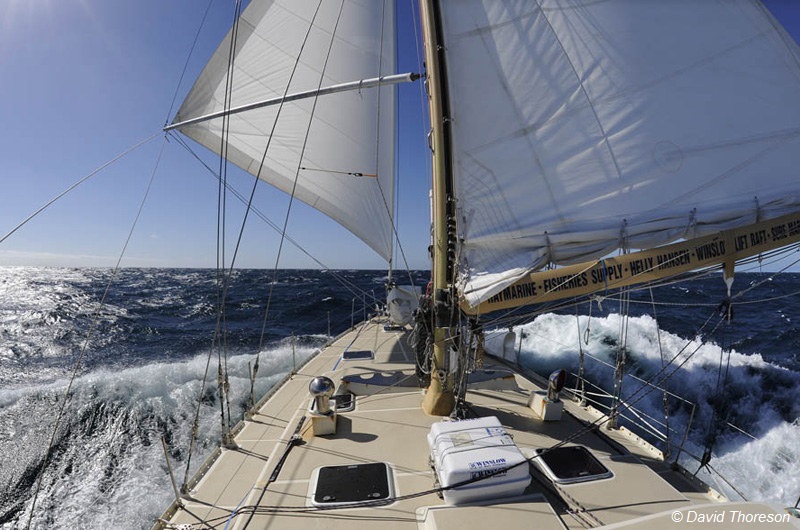To Address Climate Change, Take Arctic Drilling Off The Table

(Written by David Thoreson. David Thoreson is a professional photographer, Explorers Club Fellow, and the first American sailor in history to sail the infamous Northwest Passage in both directions. This piece has also appeared on AlterNet.)
April marked the sixth anniversary of the Deepwater Horizon tragedy that occurred in the Gulf. We can’t let a similar tragedy happen in the Arctic.
Yet, the Obama administration recently released its proposed 5-year plan for offshore leasing, and while the Atlantic has been given a pass from drilling, the Arctic is still open to potential future development. If we want to address climate change in a meaningful way we need to acknowledge that exposing new areas, especially sensitive areas like the Arctic, to potential fossil fuel development simply can’t happen.
In 2007, our 57’ sailboat, Cloud Nine, was transiting the Northwest Passage among the islands of the Canadian Arctic Archipelago. What used to be icy and treacherous waters, instead were nearly ice free. In fact, to the astonishment of those on board, the nearly 7000-mile voyage took only 73 days, and the Cloud Nine never touched one piece of ice.
This was a very different picture from what happened when we attempted the same route in the summer of 1994. That summer we were met by ice choking off all potential routes. We were forced to abandon the voyage and retreat out of the Arctic.
In the 13 short years between those two sailing expeditions to the far north, there was a 40 percent loss of summer sea ice in the Arctic Ocean. That is a 40 percent loss of our northern polar ice cap. Human activity is having a profound and sudden impact on Earth’s climate systems, and the Arctic is experiencing the most rapid and visible changes. And in March, in a move counter to preventing the human impacts of climate change, President Obama and his administration left open the possibility for potential Arctic offshore drilling. This is unacceptable. We need to do better to protect our planet.
The Arctic Ocean environment is harsh and unforgiving – it is cold, dark and icy for most of the year. There is little infrastructure in place to help if there was a spill – the nearest Coast Guard station is 1,000 miles away. And the fact is: when we drill, we spill. Accidents are part of drilling and the risks in the Arctic are huge. According to the federal government’s own report, there is about a 75 percent chance of a spill if development happens in the Chukchi Sea. And we know that cleaning up a spill in the Arctic’s icy environment is impossible.
For centuries, explorers have sought to navigate the Northwest Passage — a shortcut from Europe to Asia that would negate sailing around the southern extremes of Africa or South America. For much of that time, the idea was something between a flight of fancy and a dangerously unapproachable challenge. Now, the Northwest Passage and the Northern Sea Route are opening to navigation, and we understand that our very own human activity is causing the Arctic environment to rapidly change.
President Obama has made a commitment to mitigate climate change and has announced a U.S.-Canadian agreement to work together to protect the Arctic. The Arctic, which is dual-threatened by climate change and fossil fuel development, should be taken off the table to leasing in the 5-year plan. The president still has time to make the right decision and remove new Arctic leases from the plan – protecting our climate and protecting the Arctic are intrinsically linked, and we can no longer stand by and pretend that we don’t see the impacts of humans on climate change and the Arctic.
David Thoreson is a professional photographer, Explorers Club Fellow, and the first American sailor in history to sail the infamous Northwest Passage in both directions.
